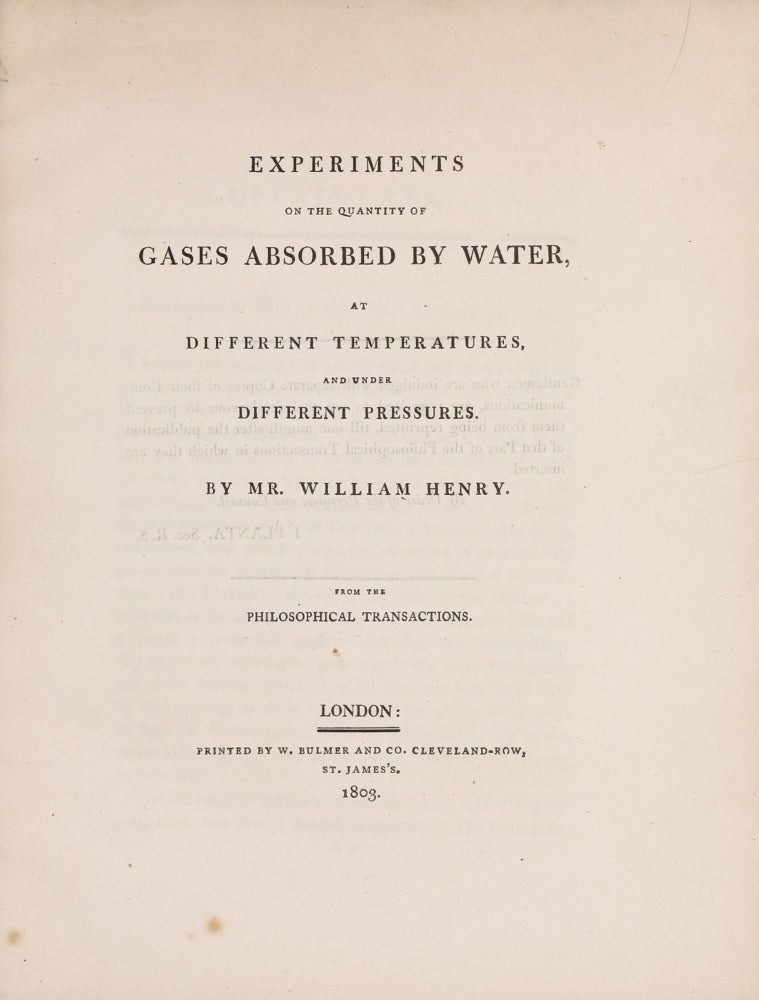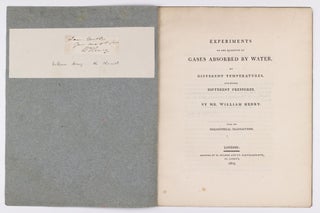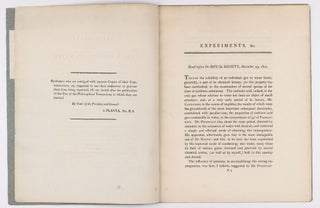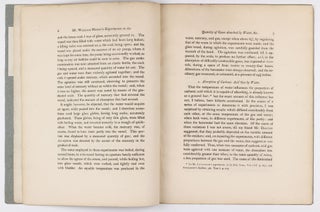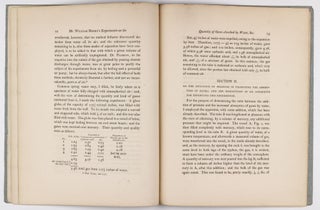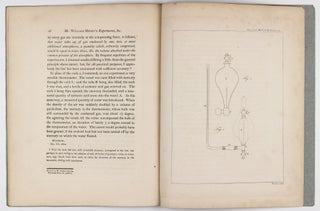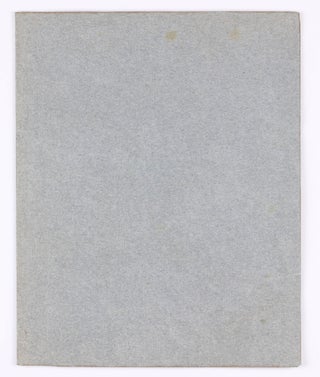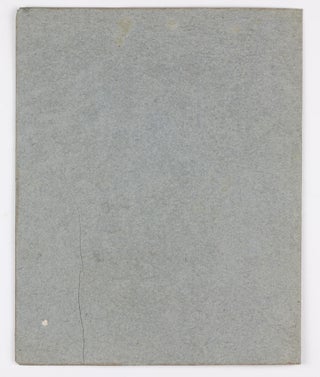Formulating Henry's Law - Exceptionally rare offprint issue
Experiments on the Quantity of Gases Absorbed by Water at Different Temperatures and under Different Pressures.
London: Printed by W. Bulmer and Co., 1803.
1st Edition. Soft cover. Near Fine. Item #003151
Offprint from: Philosophical Transactions of the Royal Society of London, vol 93, 1803. 4to (270 x 217 mm). [3] 4-16 pp. 1 engraved plate. Simple paper wrappers. Internally only little age-toned, occasional minor spotting. Provenance: W. Bruce Fye. Fixed to inner front wrapper is a paper slip bearing Henry's signature. ----
EXCEPTIONALLY RARE OFFPRINT OF THE FIRST APPEARANCE OF HENRY'S LAW. It is in this paper that Henry first describes his discovery of the proportional relationship between a gas absorbed in a liquid and the pressure of the gas over the liquid, now known as Henry's Law. Significant in itself, Henry's discovery was also crucial to the development of his contemporary John Dalton's atomic theory (The Origin of Dalton's Chemical Atomic Theory, Isis, 1956).
William Henry "was elected fellow of the Royal Society in 1808, and in 1809, the Royal Society awarded him the Copley Medal. Henry devoted much of his research time to chemistry, with an emphasis on the behavior of gases. He read one of his best-known papers to the Royal Society in 1802 and published it in 1803. The paper described his experiments on the amount of a gas absorbed by water at different tem- peratures and under different pressures. For example, he demonstrated that if a gas was compressed to twice the normal atmospheric pressure, twice as much was dissolved. These kinds of observation led to Henry's Law, which Linus Pauling rigorously defined in modern terms in General Chemistry: At Constant temperature, the partial pressure in the gas phase of one component of a solution is, at equilibrium, proportional to the concentration of the component in the solution, in the region of low concentration. This is equivalent to saying that the solubility of a gas in a liquid is proportional to the partial pressure of the gas." (C. Pickover, Archimedes to Hawking: Laws of Science and the Great Minds Behind Them. Oxford Univ. Press, 2008, p.186-7). - Visit our website for additional images and information.
Sold
Delivery time up to 10 days. For calculation of the latest delivery date, follow the link: Delivery times
Lieferzeit max. 10 Tage. Zur Berechnung des spätesten Liefertermins siehe hier: Lieferzeiten


